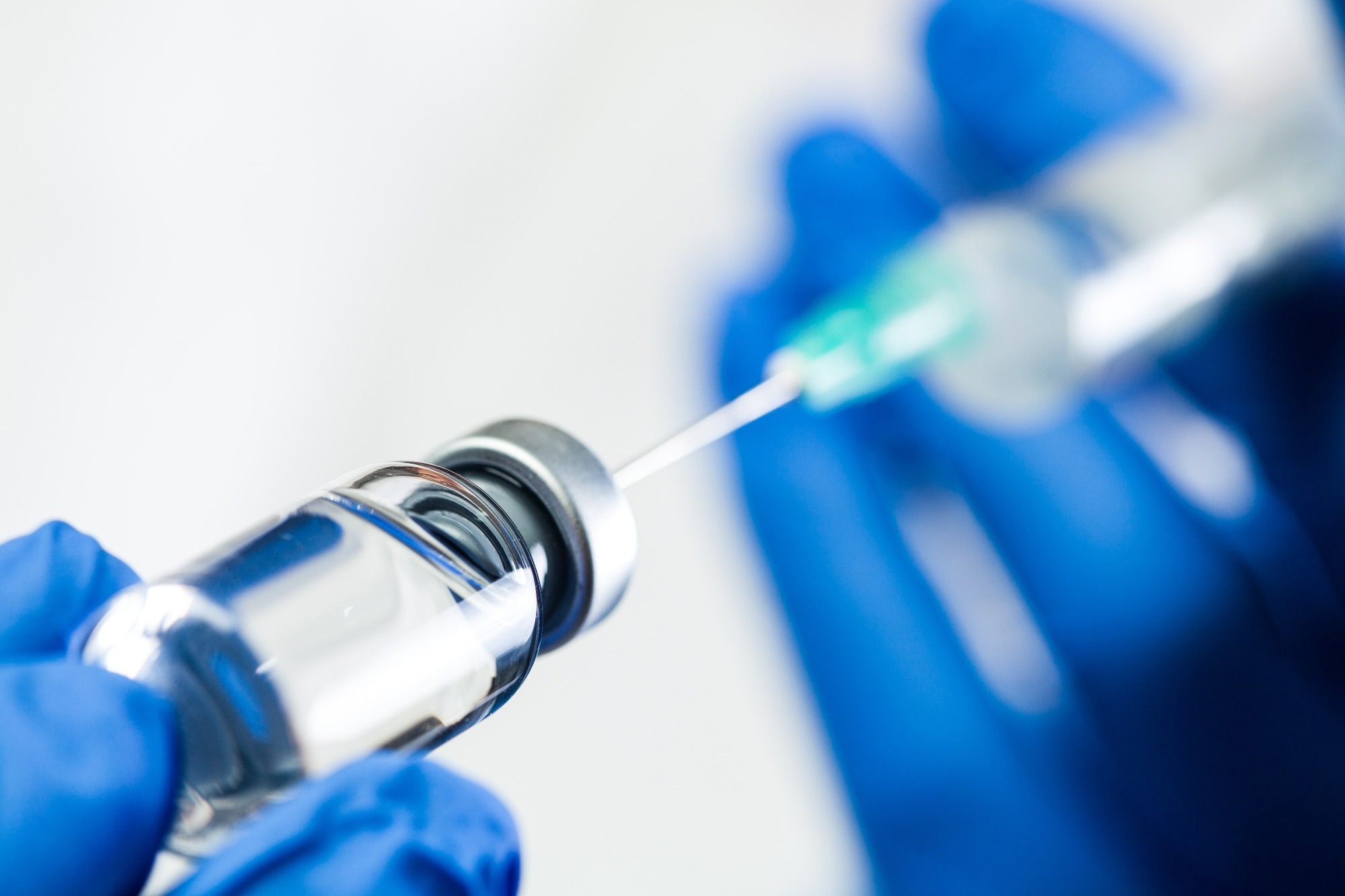They made preliminary estimates of bivalent (updated) messenger ribonucleic acid (mRNA) coronavirus disease 2019 (COVID-19) vaccine effectiveness (VE) against symptomatic infection by Omicron BA.5- and XBB-related subvariants. The study duration was December 1, 2022, and January 13, 2023.

Study: Early Estimates of Bivalent mRNA Booster Dose Vaccine Effectiveness in Preventing Symptomatic SARS-CoV-2 Infection Attributable to Omicron BA.5– and XBB/XBB.1.5–Related Sublineages Among Immunocompetent Adults — Increasing Community Access to Testing Program, United States, December 2022–January 2023. Image Credit: Cryptographer / Shutterstock
Background
The SARS-CoV-2 Omicron BA.2-derived XBB and XBB.1.5 mutants are spreading rapidly across the US. Studies have shown that bivalent mRNA boosters provide additional protection against symptomatic XBB/XBB.1.5 infection for at least the first three months in recipients of two to four monovalent vaccines. However, studies have not made the VE estimates of bivalent COVID-19 vaccines based on mRNA technology. Notably, bivalent boosters contain mRNA encoding the spike (S)-gene of two SARS-CoV-2 strains, the ancestral strain and Omicron BA.4/BA.5 sublineages.
About the study
In the present study, researchers recruited individuals receiving SARS-CoV-2 testing at ICATT sites between December 1, 2022, and January 13, 2023, suspecting one or more COVID-19 and similar illnesses. They provided extensive information on vaccination history, current symptoms, previous SARS-CoV-2 test results, and pre-existing health conditions, if any.
The researchers used failure of S-gene amplification (SGTF) in real-time reverse transcription–polymerase chain reaction (RT-PCR) as a proxy indicator of infection with BA.5-related sublineages (e.g., BQ.1.1, BQ.1, BF.7) and S-gene target presence (SGTP) as an indicator of XBB infection, including infections by BN.1, and other BA.2 sublineages.
They reported quantitative results as cycle threshold (CT) values for three SARS-CoV-2 genes, S, nucleocapsid (N), and open reading frame (ORF1ab). A CT for S-gene greater than four cycles above the average of N and ORF1ab indicated SGTF, and SARS-CoV-2–positive samples with no SGTF were, thus, considered SGTP.
The team also computed the relative VE of a bivalent booster and odds ratios (ORs) using multivariable logistic regression models. For VE calculations based on SGTF/SGTP status, they used the formula (1 − OR) x 100.
Study findings
By the end of the first week of December 2022, ~13% of sequenced samples at ICATT sites belonged to Omicron BA.2 sublineages, with XBB.1.5 and XBB mutants contributing 2.4% and 5% cases, respectively.
By the end of the study duration, case numbers rose to ~41%, with 37.2% and 4% cases due to XBB.1.5 and XBB, respectively. By January 16, 2023, XBB.1.5 prevalence continuously increased nationwide, as assessed by the whole genomic sequencing (WGS), though WGS results for all the specimens collected during the study period were unavailable.
Among the results for 29,175 nucleic acid amplification tests (NAATs), 10,596 (78%) and 3,052 (22%) were SGTF and SGTP, respectively. Between December 1, 2022, and January 2, 2023, XBB.1.5 constituted 33% of samples exhibiting SGTP, with XBB.1.5 accounting for 38% of them, and this rose to 43% between December 18, 2022, and January 2, 2023.
Relative VE of a bivalent booster dose in individuals aged 18 to 49 was 52% and 48% against symptomatic BA.5 and XBB/XBB.1.5 infections, respectively. Likewise, it was 43% and 37% among persons aged 50 to 64 years and ≥65 years against symptomatic BA.5-related infection, respectively. However, VE remained similar against BA.5-related infections and XBB/XBB.1.5-related infections across age groups. All these individuals had received the booster shots two to three months earlier, while controls had not received a bivalent booster.
Intriguingly, among controls, more patients testing negative for SARS-CoV-2 reported receipt of a bivalent booster than those with positive results. Also, 45% of the recipients of only monovalent vaccines reported a SARS-CoV-2-positive result compared to bivalent dose recipients (45% vs. 34%). The average time since the last dose among monovalent vaccine recipients was 13 months for both case patients and controls.
Conclusions
XBB mutants, especially XBB.1.5, appeared to be gaining predominance as they accounted for over 50% of specimen sequences in ecologic studies evaluating VE. Accordingly, the study highlighted the need for continued VE monitoring amid the emergence of new SARS-CoV-2 variants, such as XBB.1.5, having additional mutations in the receptor-binding domain of its S compared with XBB. It is currently unclear how this one mutation might affect VE.
Nevertheless, since bivalent vaccines conferred additional protection against symptomatic BA.5- and XBB-related infections in previously vaccinated individuals, all people should receive a bivalent booster dose as soon as they become eligible.